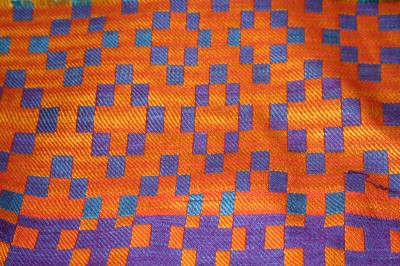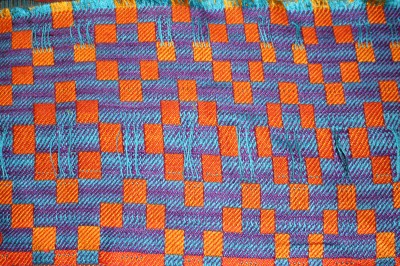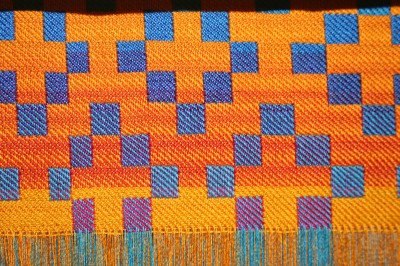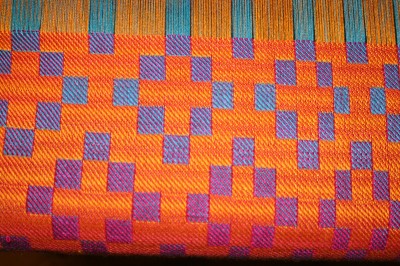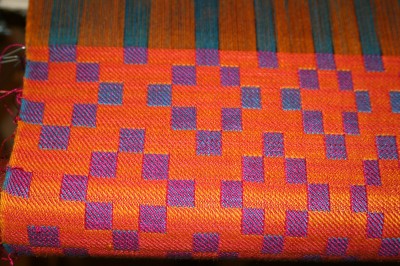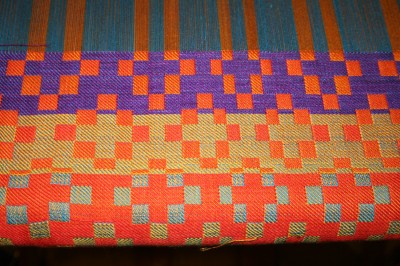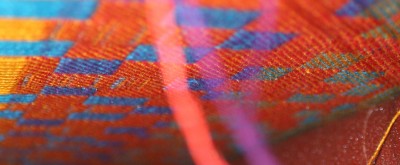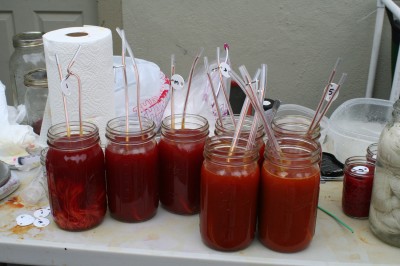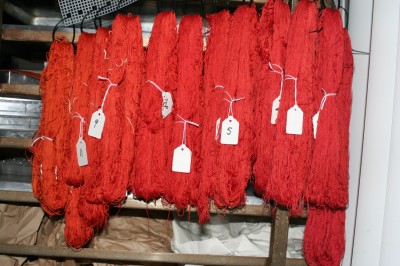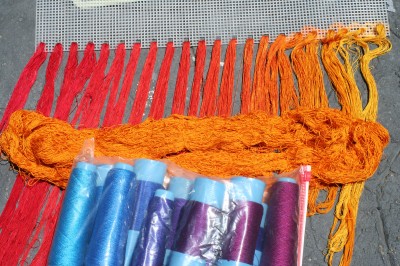I came home from work yesterday and started weaving like a madwoman – not sure what got into me! At the end of two hours I had woven another 27″, and this morning I wove another 20″, bringing my total up to 66 inches. The shawl will be about 84″ long (which is on the long side – my initial picks per inch calculation was off, so it’s longer than I had planned), so I have about 18″ to go. I’m currently weaving at about 18″ per hour, so that’s only an hour’s weaving! Piece of cake.
Here’s a photo of the last portion woven:
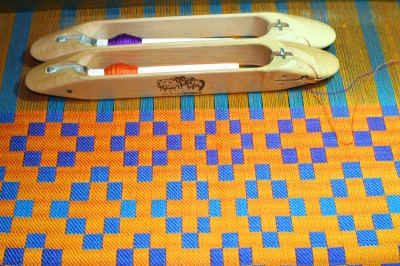
Here you can see the gradual progression from gold to orange, and the introduction of contrast. It’s more interesting in real life, though – the colors shift and flow depending on the angle of view. Nice iridescence – can’t wait to get it off the loom!
I could actually finish it this morning if not for FedEx. Yes! They are delivering my 21 kg of 30/2 silk today. 12 kg is for other people, leaving 9 kg (about 20 lbs) for myself. But the loom is noisy, so I’ve quit weaving so I can hear the doorbell when it rings. I don’t want to miss this package!!!
Now the question becomes, do I weave a second shawl or concentrate on finishing this one before Complex Weavers? It depends mostly on how much I like this shawl once it’s off the loom. If I find I don’t like the pattern much I’ll try to weave another. I have four hours on Friday, almost all day Saturday, and the first half of Sunday to weave, so I’m pretty sure I can finish a second shawl in time. If I like this shawl, though, I’ll focus on getting it finished before embarking on a new one.
Over the last few hours of weaving, I’ve started getting into the swing of weaving with two shuttles. I’ve gone from pure incompetence (having to figure out laboriously which shuttle should pass through from which direction) to reasonable competence (being able to glance at the loom and tell which shuttle goes next). I’ve reached the point where I rarely make mistakes.
I’ve also been working on smoothing out my hand movements. At first I was clumsily grabbing the shuttle with one hand in order to hand it off to the other hand (inefficient and slow), now I’m using only one hand to pick up each shuttle. Because I know the order and where to place each shuttle, I don’t have to slow down to figure anything out – catching the shuttle, placing it, picking up and throwing the next shuttle is virtually automatic. Now I’m working on making my movements more circular, smoother, less bumpy. This makes for better weaving rhythm, which is more comfortable, more efficient, and more Zen (to me anyway).
It’s also faster. Over the course of the last several hours, I’ve reduced my time from about 3.6 seconds per pick to about 3 seconds per pick, including the time required to advance the warp, reset the temples, etc. That’s a 17% decrease! I’m definitely weaving more efficiently.
At any rate, I hope my yarn gets here soon. I’m not very good at twiddling my thumbs. 🙂

